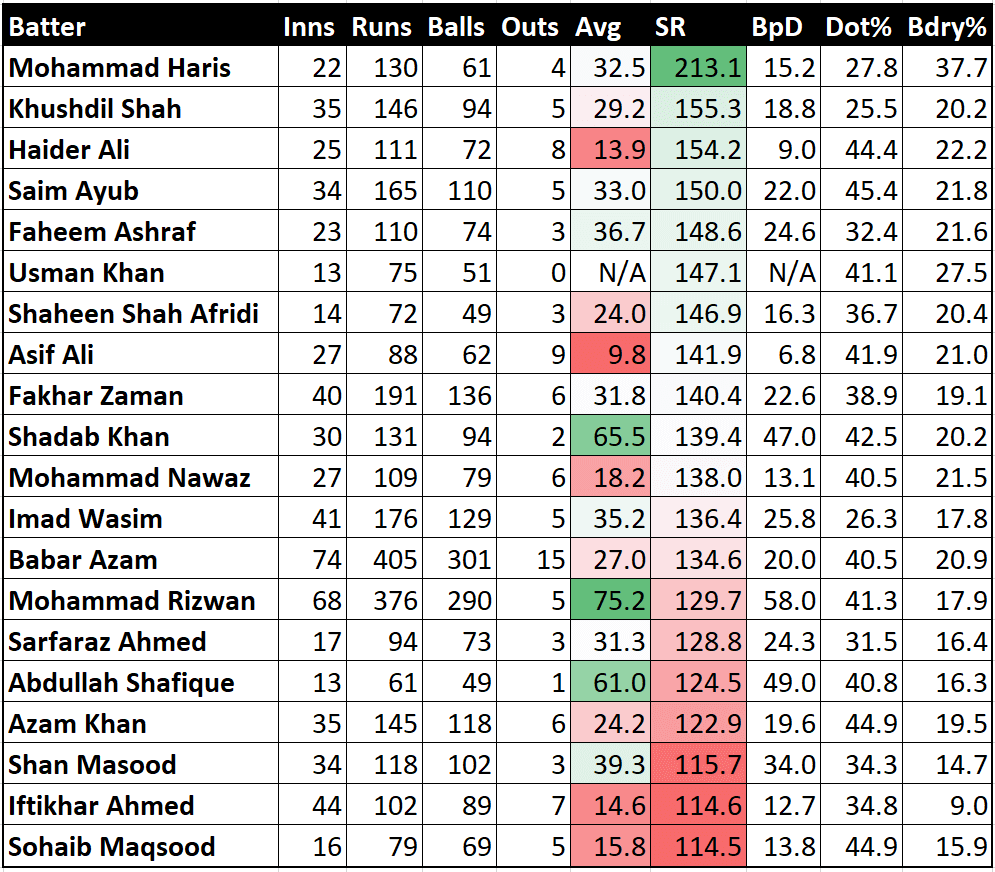
Do Not Forget Pace, Pakistan
Modern T20 cricket is brutal; the margin for error is minute, and even if you execute what you set out to do, the result may not be in your favor. For a game that is ever-evolving and now heavily analytics-based, the luck factor can only be minimized but not eliminated. It is something that players have to live with and accept. So much so that the first coaching meetings of some teams are not a discussion on how the team will play or their strategies for the season but rather an acknowledgment that execution does not equal results.
No team can be perfectly constructed because there are limited resources available. There are some boxes that you have to leave unchecked. You can know where it is the team will lose and be helpless to do anything to stop it; it is on those days when you thank the cricketing gods for letting luck remain a factor in the game as much as you will curse it on your off days.
What is cricketing luck?
You may think it’s a dropped catch, a missed stumping, or a crucial misfield. You are thinking too small. Cricketing luck can also be a pitch playing different than any other pitch prepared ever at the ground, a bowler waking up in the morning and deciding he can push himself to bowl 5ks faster today, a batsman deciding that today is the day he does not play conservatively and that is all without factoring in the ever-bemoaned weather conditions.
One way to try and “luck proof” your side is to pick different types of players who can perform in differing situations/conditions, thus allowing you the security that they will be there when their day comes. But for every different player type you play as “luck proof,” there is a similar player type who would actually have done better in the particular game that you are currently playing.
There are teams that do this, those that decide they will play a certain way with a certain group of players and are widely successful because that group of players is very good at playing that game. They essentially play the same game again and again and win most of them because they know how to win those games. The problem arises when they are asked to play a game different from one they are comfortable with. Then, they usually falter, which is why they usually do not win tournaments. Tournaments have the likelihood to throw up different conditions and different types of opposition players.
So, do Pakistan want to be that one-note side who knows how to win that one game a thousand times over and then hope luck is on their side for the times it is not that game or a “luck-proof” side with the propensity to lose games they should not but also win games the one-note side would not have?
Do you see the irony of having to actually surrender more to luck in an effort to “luck-proof” your side? Basically, it makes sense to have 50-game seasons to determine the best side because this stuff is crazy. You can already hear the corporates cheering that statement and the IPL slowly engulfing another cricketing calendar day.
T20 cricket’s player types are not purely restricted to fast bowler, spinner, batter or even opener and middle order. There are more in-depth assessments that teams should do before determining how a player fits in their side. Until recently, Pakistan had a problem vs. spin bowling, as their batting would come to a grinding halt at the very least because of their stubbornness to not utilize their resources properly – a thing that may hopefully be a relic of the past with the introduction of Saim Ayub, Azam Khan, the correct utilization of Shadab Khan, and maybe the last-minute addition of Usman Khan.
While being excited to plug this gaping hole, Pakistan should remember that although most high-level league cricket is equivalent to T20Is, the T20 World Cup – with teams playing their best XIs with fast bowlers broken out of their cryofreeze – is the highest quality form of T20 cricket you can get. It is here where Pakistan should pick their side, not on form, but on player abilities and what safeguards they bring to the side. In short, Pakistan should not forget that pace is pace yaar, even when picking their batting lineup.
Pakistani Batters vs. 140kph+ Deliveries in T20s Since 2020
When teams plan for batsmen, they look for obvious weaknesses and will attack those first, but Plan B 90% of the time is to just bowl hard lengths at pace and cramp him up. It is relatively easier to execute than other options, with a higher margin for error while being extremely effective to most batsmen, especially subcontinent-based ones.
The likelihood of an error among bowlers increases when they have to bowl different balls to different batsmen. In the olden days, it would be the left-right combo that would mess them up, but now, with the higher analytics-based setups and T20 cricket being brutal, different player types also mess them up. That they have to store multiple bits of information in their head, who to bowl hard lengths to and who not to, who to bowl wide to and who to bowl straight to, means that they relish lineups where the plan of attack is the same for all.
It is why Pakistan can not fall for the trap of picking a one-note batting lineup since it’s just those players who are in form right now. With 12 T20Is and 2 months still to go, form can not be a determining factor for selection, but rather, player roles should be. On the day of the match, form becomes a factor, not in the build-up and preparation.
Being one-note does not only apply to batting; having a multi-pronged bowling attack is also key. Otherwise, you are vulnerable to certain player types. In recent times, Pakistan have found the middle-order left-hander to be their Achilles heel as it has restricted their usage of their left-arm spinner. With Saim developing his bowling into a trustable counter, such a problem might no longer exist. But Pakistan should once again not fall into the form trap and leave their high pace-hard lengths in the middle overs box unchecked when picking their bowling attack.
Teams will target Pakistan’s spinners because it will be difficult to get runs off the fast bowlers at the start. Most spin bashers are particularly vulnerable to hard lengths; hard lengths at 130s may keep them quiet, but that is not enough for Pakistan’s bowling lineup, which will want to restrict the opposition to par or below-par totals. Hard lengths at 140+ gets them out.
To conclude, pace is pace yaar, hard lengths are hard lengths yaar, do not forget Haris (Rauf and Mohammad) yaar.








Zia Ul Rehman Ahmad
Amazing stuff, InshAllah Pakistan will do it this year , #T20 world cup